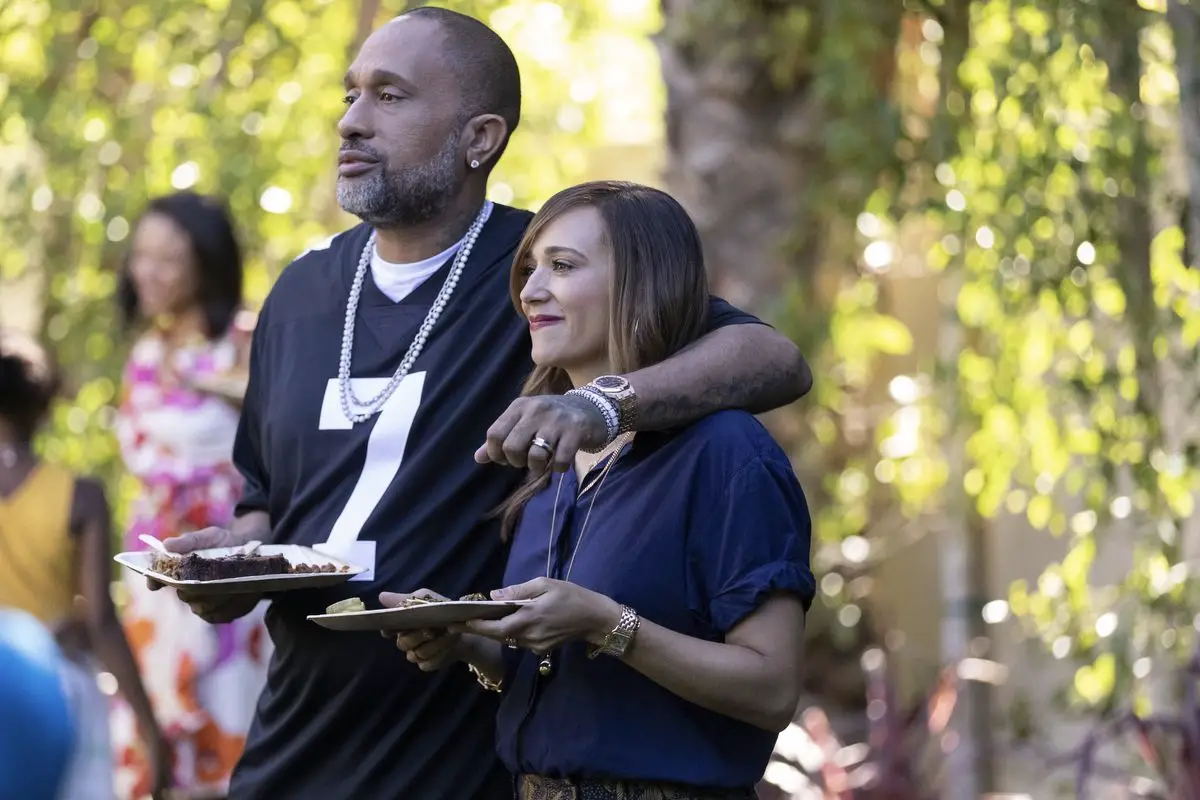It’s 2020, and yes, colorism still exists, as the new Netflix show “BlackAF” demonstrates. Society still wonders why black people continue to talk about slavery. The answer? The history of black people in the United States started with slavery, and the effects of it are still rampant to this day. We didn’t come here free like most white immigrants. Imagine, four hundred years later, and black people are still fighting the systematic mental chains of slavery.
In Germany, they continue to teach their children about the Holocaust, while here in America, similar horrifying and tortuous acts have been committed. The United States was built on the backs of African American slaves, and people wonder why we still have to talk about it.
It’s necessary to educate people, because every day there is something new to discover, just like any other part of history. Unfortunately, a huge portion of our history isn’t pleasant. And certain people feel uncomfortable about it, which is why they try to silence it. But no — our history is just as important and needs to be heard. No matter how hard it is to hear.
Recently, I was watching a YouTube video by Queen Chioma called “Drake’s Son is BLK!? ” The famous artist and OVO label founder recently revealed a picture of his two-year-old son, Adonis Graham. Photos of Graham had been kept under wraps since news broke that Drake had a son. What was even more surprising was that the mother of Drake’s baby wasn’t black, but French.
Anyone that knows Drake’s dating history knows he loves black women. So when people found out that the mother of his child was white, there was a lot of unnecessary condemnation toward her. When the post of Adonis finally surfaced, it was of a blue-eyed, blond-headed little boy.
People were up in arms — especially black people —complaining about and bashing the little boy, just like his mother. Imagine how ridiculous and disappointing it is for grown adults to be ridiculing a poor, defenseless baby, a child that has done nothing to this world but be brought into it.
Why were people so upset? They were expecting Adonis to have more black features. For more in-depth information, watch the full video linked above. What I will note is that Drake is half black and half Jewish (aka white) and Adonis’ mother is fully French (aka white). In what world was anyone expecting Adonis to look remotely black? If anything, he resembles Drake’s mother.
What caught my attention the most was toward the end of Chioma’s commentary, when she talks about this unspoken stigma of how typical black families should look. “The black community only wants to create and celebrate dark-skinned men and light-skinned or biracial women.” She then goes on to talk about how light-skinned men are looked at as less masculine, even weaker and more emotional, than darker-skinned black men.
Drake is the perfect example of this. For a major chunk of his career, he was known as the poster child for sensitive light-skinned black people. It wasn’t until “Worst Behavior” was released in 2013 that people started taking Drake more seriously as a rapper, helped by his rivalries with Chris Brown and Meek Mill.
Although a lot of the time, the “light skin feelings” were merely jokes, these jokes continued to perpetuate a narrative that light-skinned people are weak and dark-skinned people are mean.
Another problem that Chioma mentions is that this stigma falls on women as well. This is why lighter-skinned women are seen as more feminine and darker-skinned women are viewed as more masculine.
What Is Colorism?
This is called colorism. A more specific definition is the prejudice or discrimination against individuals with a dark skin tone, typically among people of the same ethnic or racial group. And when did this all start? You guessed it — slavery.
It’s commonly known that during the time of American slavery, the lighter-toned slaves were allowed to work in the house, whereas the darker-toned slaves had to work longer hours and in harsher environmental conditions in the fields. Regardless of the location, both were treated as less than human; however, from the outside looking in, working in the house was revered as “better” than the field.
Lighter-toned slaves were looked at as less threatening and closer to the white slave masters in comparison to the darker-skinned slaves. But that didn’t stop either one from getting beaten and raped.
As you can see, this trauma has instilled a mindset that has followed the black community for centuries, and it continues to plague the community through division.
Colorism is not only a black American problem, but a problem all over the world for all nonwhite races. Since the idea that lighter skin is the right skin, bleaching has become an accepted practice around the globe, specifically in the black community, where it’s still being used, albeit not as much as in the past. Predominantly in African countries and Caribbean islands (particularly Jamaica), and even right here in America, this extremely dangerous practice is still done to this day.
“BlackAF” and Colorism
In April, Kenya Barris’ “BlackAF” was released on Netflix. Barris is the creator of the critically acclaimed TV show “Black-ish,” the spinoffs “Grown-ish” and “Mixed-ish” and countless other works. “BlackAF” is basically a “Black-ish” spinoff; however, since it’s a Netflix show, it doesn’t have all the restrictions brought on by TV network executives.
https://www.youtube.com/watch?v=O-LtbHykms0
“BlackAF” is interesting, funny and educational — highly recommended for those who like “Black-ish” but felt it was a little limited, or even for those who would like a better insight into what it’s like to be black. Even though Barris has received a lot of praise for “BlackAF,” he has also received a lot of criticism. The main reproach for “BlackAF” is the lack of dark-skin representation.
“Like so many of the showrunner’s other series, blackAF’s cast is composed almost entirely of lighter-skinned and/or mixed-race Black people. Yes, they’re all undeniably Black, but what does it say when a show about Black people only seems to prop up a certain aesthetic of Blackness, especially in an industry with an observable problem with colorism?” wrote Ineye Komonibo at Refinery29.
In Barris’ defense, he is basing his creative works on his own family. And as the article further states, the two “BlackAF” actresses do acknowledge their light-skin privilege and are working to educate and help change the situation.
Yet, that doesn’t change the fact that countless prominent black sitcoms, movies and even real-life people follow this trope of what a black family (or one worth documenting) is supposed to look like. Here are just a few:
“Sister Sister”
“Proud Family”
“Martin”
“The Cosby Show”
“Black-ish”
“The Bernie Mac Show”
“Greenleaf
“Atlanta”
“The Carmichael Show”
“My Wife & Kids” (Although both parents were light skinned, the mom was still lighter.)
“Power” (The protagonist was cheating on his wife all six seasons with a Hispanic woman.)
“Love & Basketball”
“Poetic Justice”
“Menace II Society”
“Coming to America”
“Do the Right Thing”
“Paid in Full”
“The Boondocks”
The Impact of Colorism
These may be unpopular opinions, however, the facts are undeniable. Even if the male protagonist is of fairer skin, his female counterpart is usually lighter than him. This is subconsciously driving a wedge between the black community because it creates the idea that if you’re a darker-skinned woman or a lighter-skinned man, you are not worth the acknowledgment of your own race.
It’s also negatively affecting marriage dynamics, which affects the family dynamic, which will only tear apart black families rather than build and strengthen them. “Dark-skinned women are less likely to be married than lighter-skinned women,” Kaitlyn Greenridge from The Guardian reported.
This is a call for the black community as a whole to wake up. I am sick and tired of putting the entire blame on white people. Yes, of course, it started with slavery, and obviously, black people aren’t the cause of that. However there is no excuse to continue perpetuating this divide in our culture, especially in a time when we need to be united.
It’s one thing to have a preference, but it’s another to publicly shame and degrade women (and men) because they’re not your preferred type. Especially if, like Kodak Black, the type of woman you’re insulting looks like your own mother.
















